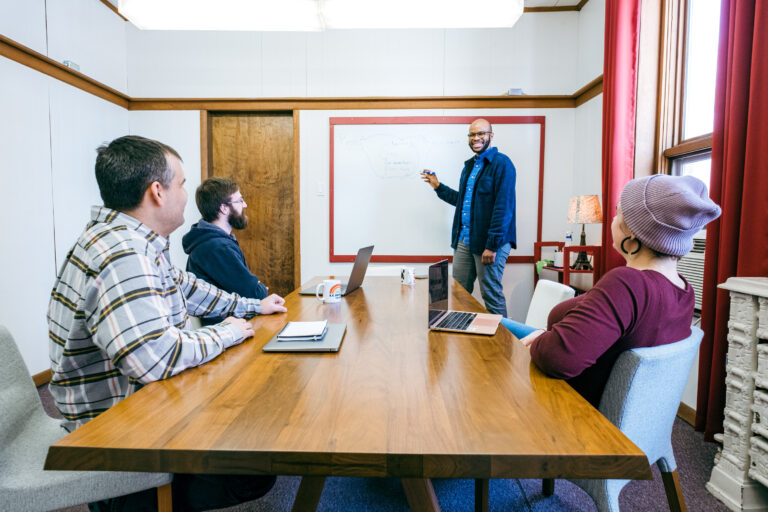Something that’s come up in many recent conversations is the return on investment (ROI) of hiring software contractors. With the United States being in a (technical) recession, many software companies are considering their expenditures.
As somebody who’s built a SaaS company, outsourced software development, and experienced all the challenges that go with growing a SaaS company, it’s become very clear to me how to make the best use of outsourcing.
What’s going to help us achieve our goals faster? And why would we use outsourcing software development to achieve those goals?
The Benefits of Outsourcing Software Teams
Customers providing you feedback about product features that are missing is something that happens a lot throughout the growth phase, especially for SaaS companies.
This is the typical product-market fit phase where companies try to find product market fit and gain customer adoption. In this phase, you’ll get a lot of pushback. Getting objections during the sales process is normal. But a lot of times, those objections will result in lost sales.
This happens in early-stage startups because you’re missing some key features that clients are looking for. During my time growing the SaaS company, we found that we could only build and maintain the core components with our product development team. There were a lot of features like integrations and reporting that our team just didn’t have time to deliver. The development team was concentrated on building the core product – and that’s what they should be focused on.
When software teams don’t get to those features early on they may lose customers. That’s ok because you’re still getting feedback, and you’ll build that into your product roadmap. It is easy to see those features stay in the backlog as other priorities come up. There have been cases where it ends up taking seven years or longer to deliver those features.
What would the ROI have been if we had completed those features earlier? If the development team had been able to build additional features into the product earlier, some of those early lost sales may have been converted. In a competitive product landscape, a single feature may be the difference between converting a sale or the client choosing a competitor’s product.
SaaS Valuation
Many founders know the valuation model for their business. When we look at a SaaS product, I can sell a product to somebody with an Annual Recurring Revenue (ARR) of 1x, and the lifetime value of that customer could be valued at 9-20x because you’ve got that recurring revenue. Maybe the customer grows the usage of the product, and that value goes up over time. If we’re looking at building a software product that will land a sale, it may be 50-100k for a software license. All of a sudden, we’re talking about an ROI of 1 million dollars for a single customer sale.
Landing a single customer immediately pays for outsourcing a project like that.
Capital Expenditures VS Operational Cost
Outsourcing software development can be seen as more of capital expenditure than an operational expenditure. You can bring a software team in to build a significant feature over a short period as a capital improvement to your product. When the software contractors finish that project, they move on. You don’t have operational expenditures, and your team can support the product like it normally would. You’ve built in more than you normally would in that timeframe.
During a recession, the talk shifts to runway and burn rate. When you’re outsourcing some of the software development short-term, this isn’t really an operational expenditure. The runway may be effected, but the long-term burn rate isn’t. The net effect is a decrease in the time it takes to get or return to profitability. By keeping the burn rate low, the company is able to navigate an uncertain fund-raising environment by capturing those customers who might have some objections to missing features in your product.
Many companies are looking at their existing funding to see how long it lasts and how long the next fundraising round will be. But it’s important to understand the tactical tools at your disposal.




